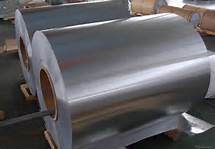Linde Technology Can Breathe Life into Aluminum for Lighter Cars, Trucks and SUVs
 |
MURRAY HILL, N and NEW PROVIDENCE, NJ -- March 4, 2015: The U.S. auto industry's shift toward lighter weight vehicles through greater use of aluminum is now in high gear with 2015 pick-up trucks rolling into dealer showrooms sporting as much as 350 pounds more of the metal than last year.
Automakers are racing to satisfy new 54.5 mpg corporate average fuel-efficiency (CAFE) targets for 2025. Automobile manufacturers report plans to use more aluminum in doors, hoods and other parts beginning in the next few years, including plans for aluminum-bodied pickups. There has been a global surplus of aluminum the past nine years1, but the shift raises questions about supply. In the near term, demand is projected to grow at an average annual rate of almost 6 percent a year through 2018.2
"The more aluminum that is recycled, the better the aluminum supply picture, especially in the near term, while the industry waits for new primary production to come on stream," says Tony Palermo, program manager, metallurgy, for Linde LLC in North America. Linde LLC is a member of The Linde Group, a leading global industrial gases and engineering company, which offers proprietary oxyfuel heating technology that can help improve the productivity and energy efficiency of aluminum production from recycled feedstock sources that will be increasingly critical to meet burgeoning demand.
Aluminum is about one-third lighter than steel, but costs about 2-3 times as much per pound. Yet a 10 percent reduction in weight means about a 7 percent improvement in fuel economy for the life of the average vehicle. Initial raw material costs are less important on vehicles with higher sticker prices. And because heftier vehicles like SUVs, pickup trucks and luxury sedans can shed pounds more easily in a material switch, they can be critical to strategies to improve fleet economy.
A new survey of automakers by Ducker Worldwide, commissioned by the Aluminum Transportation Group, projects the use of aluminum for NAFTA-produced vehicles to grow from 350 pounds per vehicle in model year 2015 to 547 pounds per vehicle in 2025. That equates to an overall market volume of 6.9B pounds now to 10.8B pounds in 10 years -- a 56 percent increase.
Sheet aluminum for auto and truck bodies remains the top growth area for the auto industry, though aluminum castings are finding their way into a growing list of automotive components. Aluminum currently enjoys about a 73 percent share, by weight, of the casting market in 2015 vehicles.3
Aluminum Boost Analysts indicate aluminum-cast parts manufacturers are increasingly engaging in vertical integration to ensure a continuous supply of raw materials. That means construction of smelters to increase secondary production from recycled content, as well as boosting downstream production of finished aluminum-based products.4
Traditionally, primary and secondary production operations have run side-by-side so that recycled content could be added to the primary operation to increase the casthouse output. In 2007, Linde documented a 60 percent increase in aluminum remelting capacity and a 50 percent reduction in fuel consumption in such a 130,000 metric ton per year facility in Norway using Linde Low-Temperature Oxyfuel (LTOF) technology.
However, primary aluminum production has been scaled back in the U.S. in recent years, and most secondary aluminum plants have lower production capacities and start at or close to 100 percent solid material in the charge, Palermo says. "With high levels of solid charge materials, you need to either add more energy or improve the energy efficiency of your process -- or both to maintain, let alone increase, melting capacity."
Linde LTOF (Low-Temperature Oxyfuel) technology addresses this problem by replacing air-fuel combustion with oxyfuel combustion that is characterized by low flame temperatures. Lower flame temperatures result in more uniform heating and lower thermal NOx generation while continuing to reap the benefits of energy efficiency and increased radiative heat transfer efficiency typically attributed to oxyfuel combustion.
According to the U.S. Environmental Protection Agency (EPA), about 1.7 million tons of aluminum were used to make durable goods such as appliances and automobile parts in 2012. While more than half of aluminum beverage cans are recycled, most back into cans, the EPA does not calculate recycled automotive aluminum in measures of waste generation, recycling or disposal.5
Linde provides industry-leading portfolio solutions for the ferrous and non-ferrous metallurgy industries, ranging from gases and equipment to process consulting and services.


